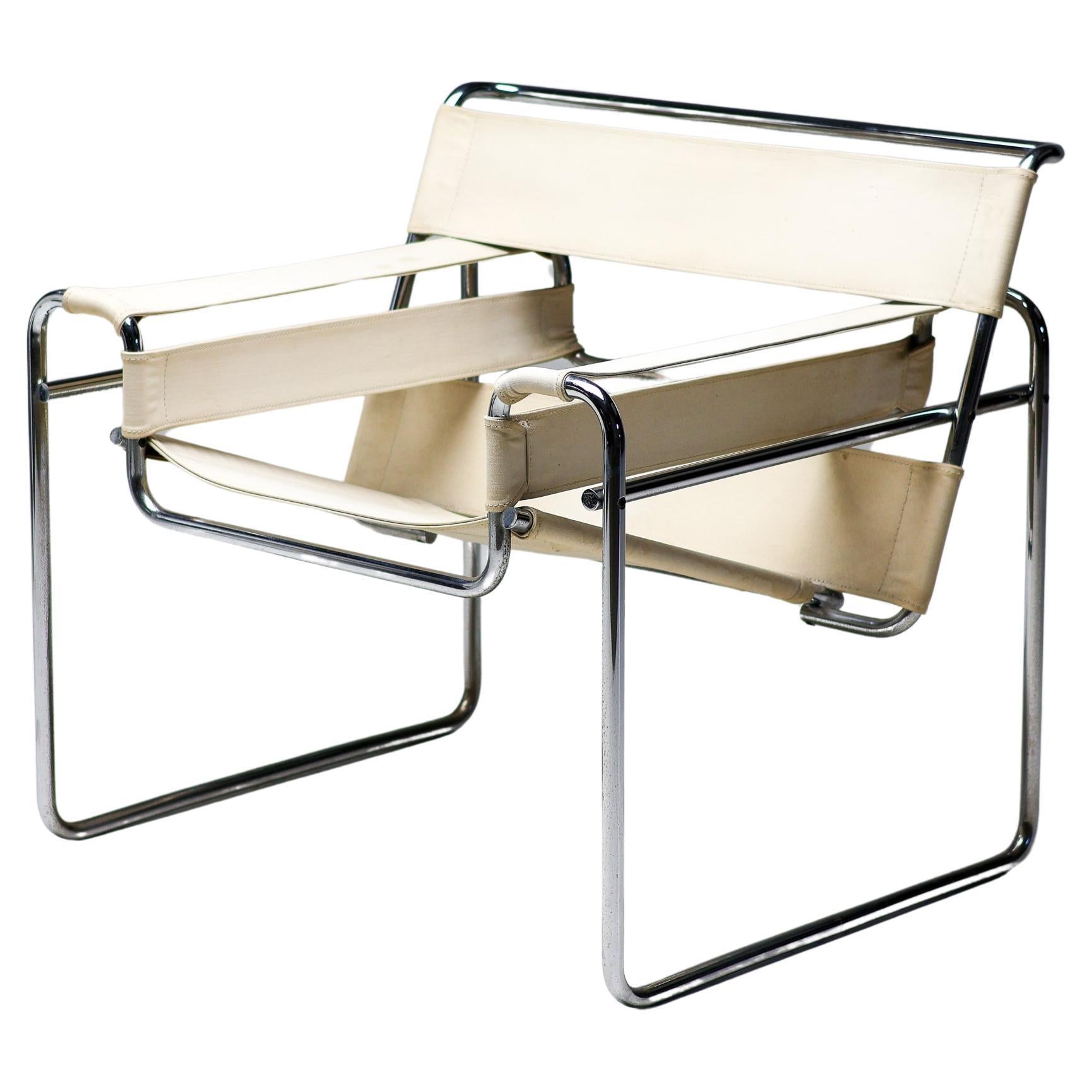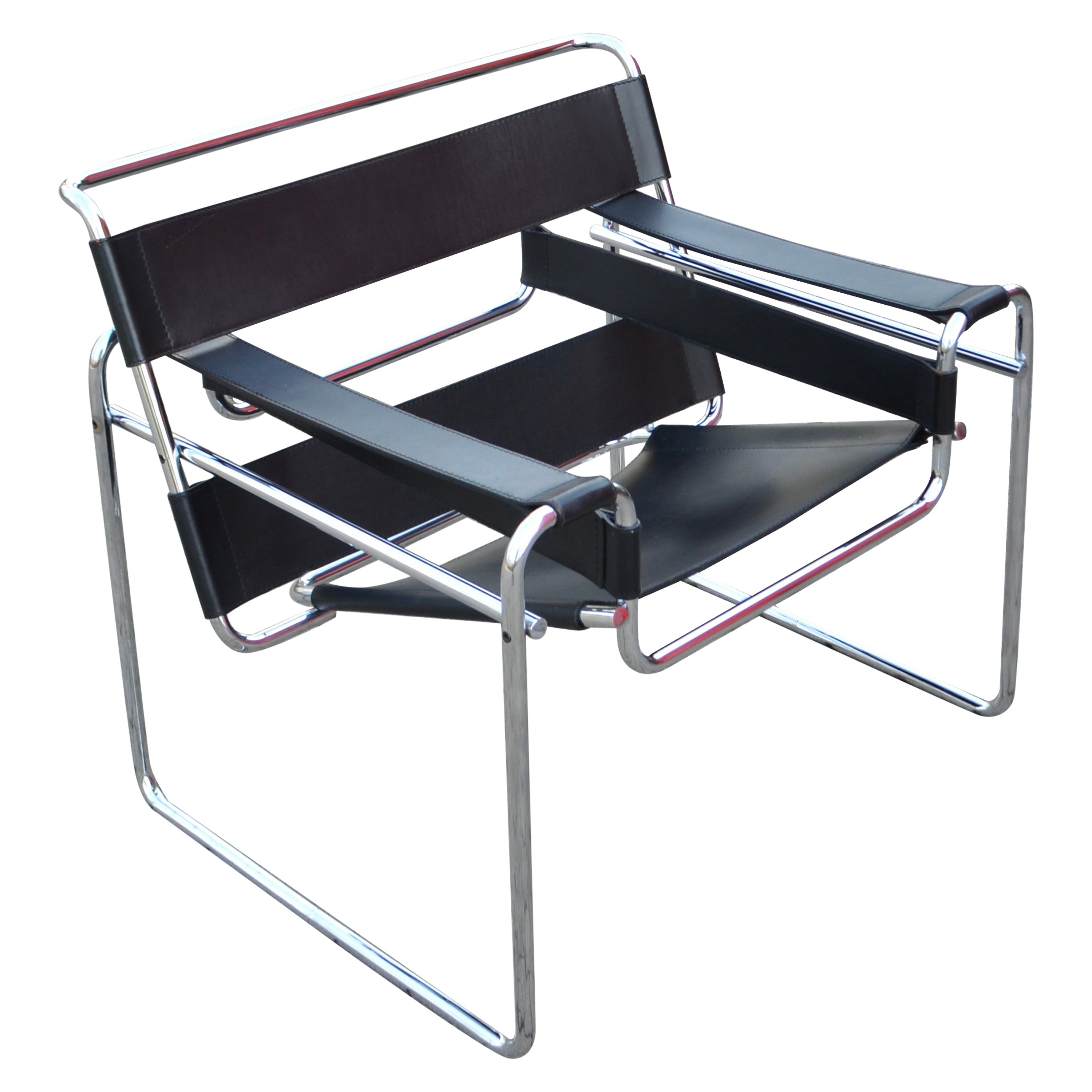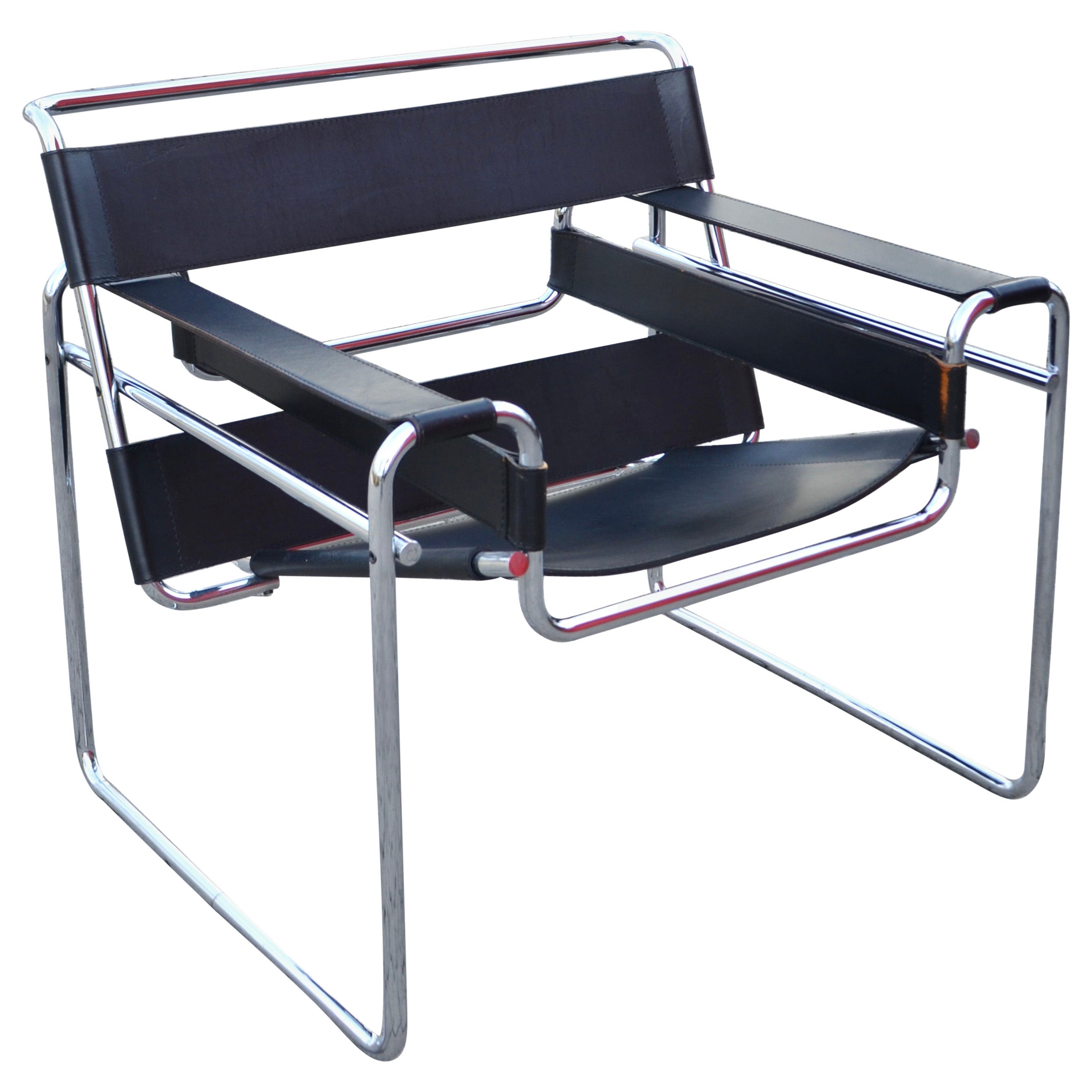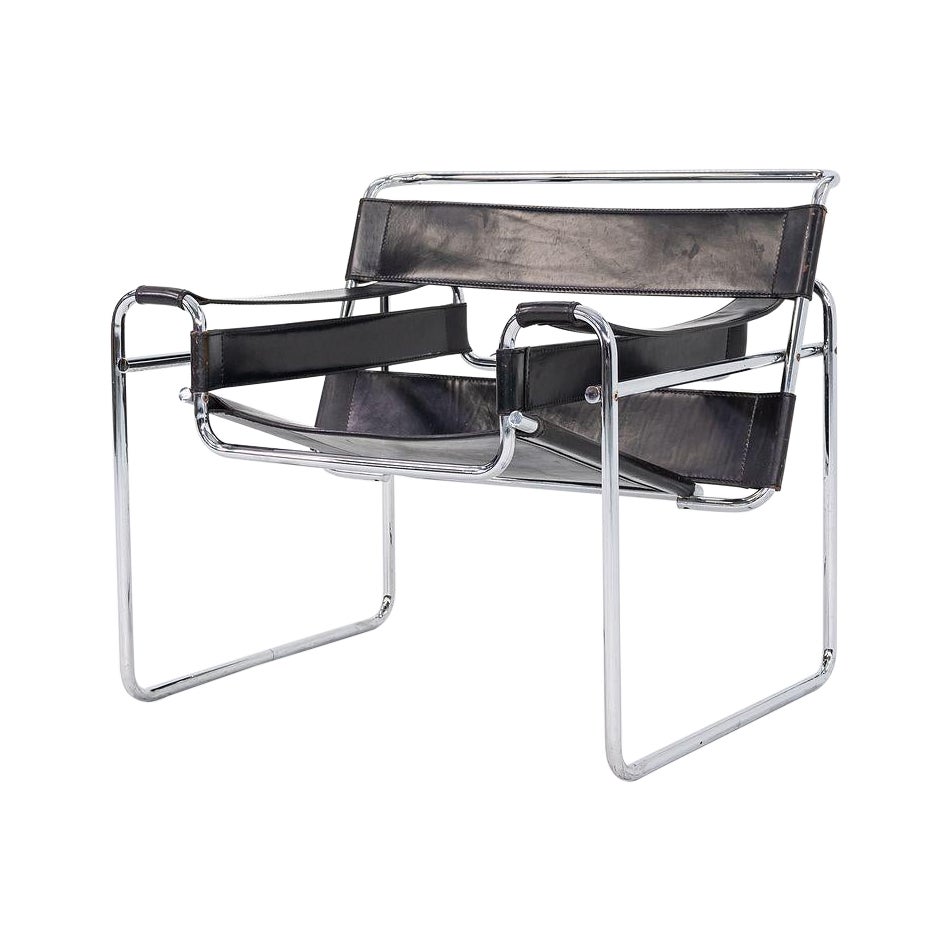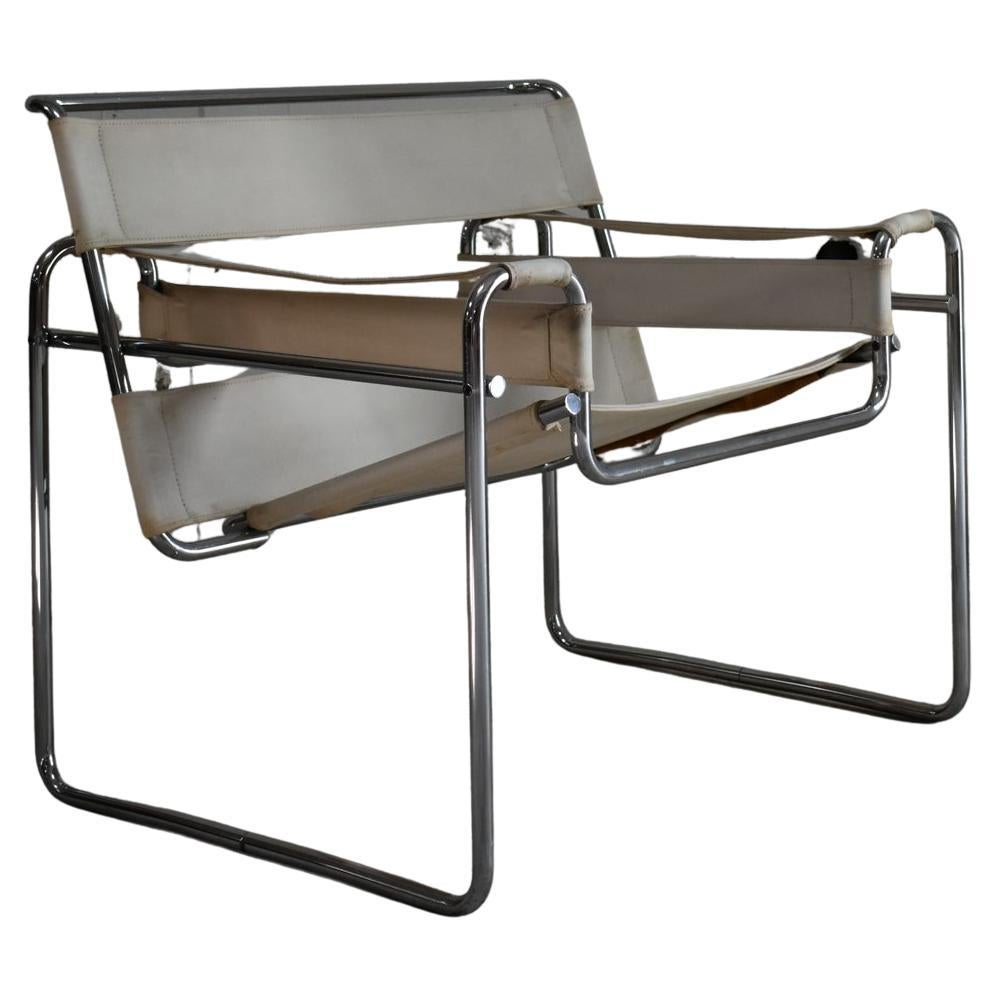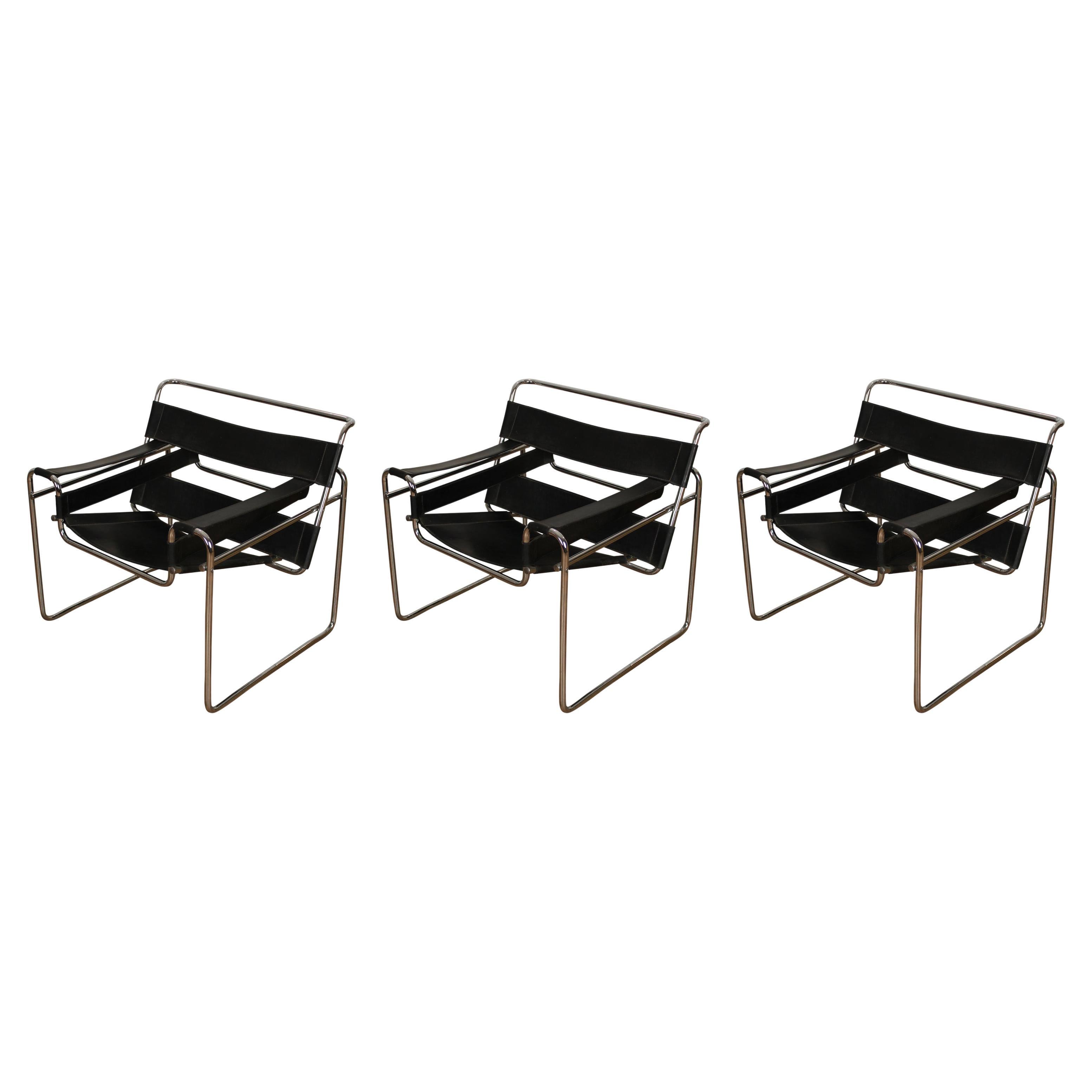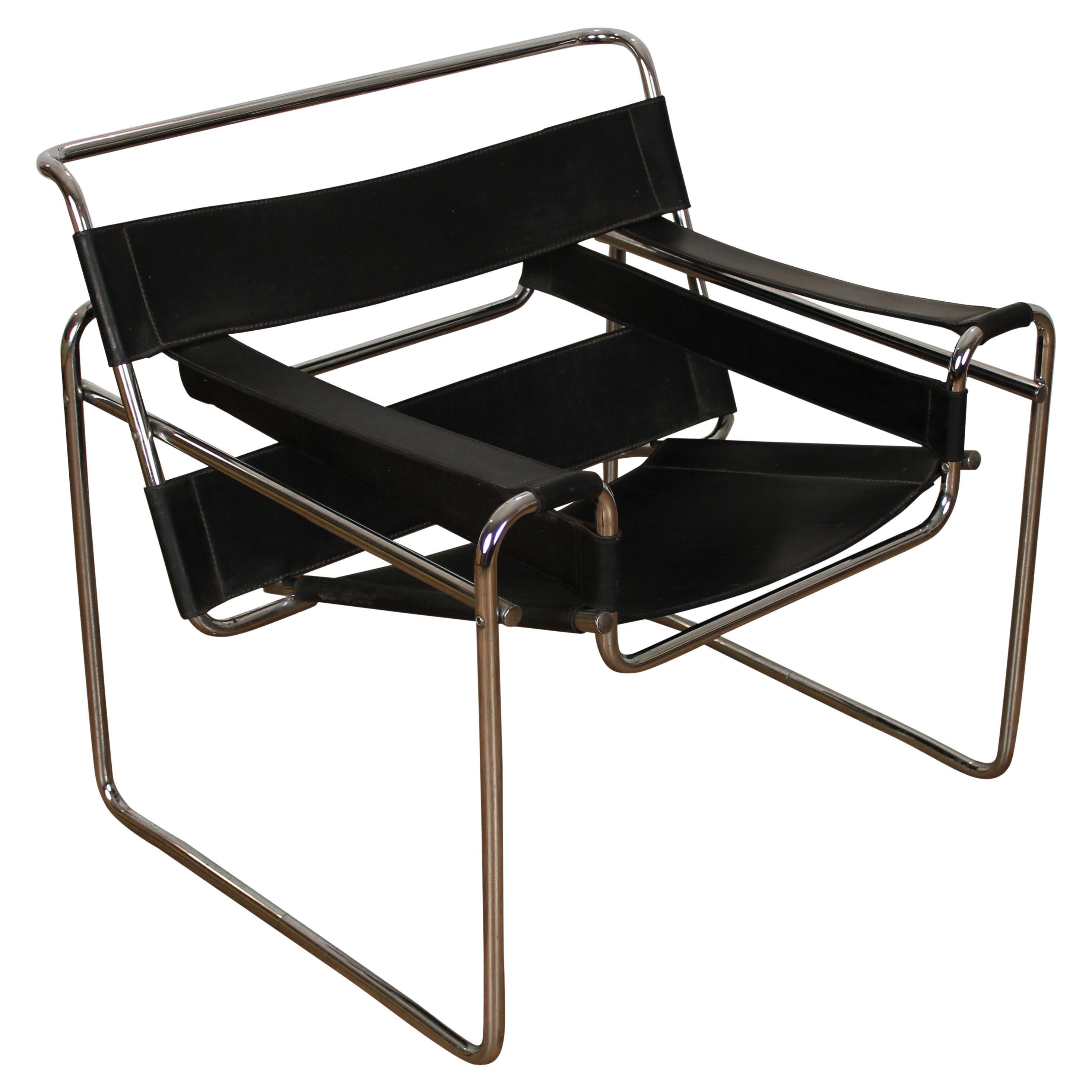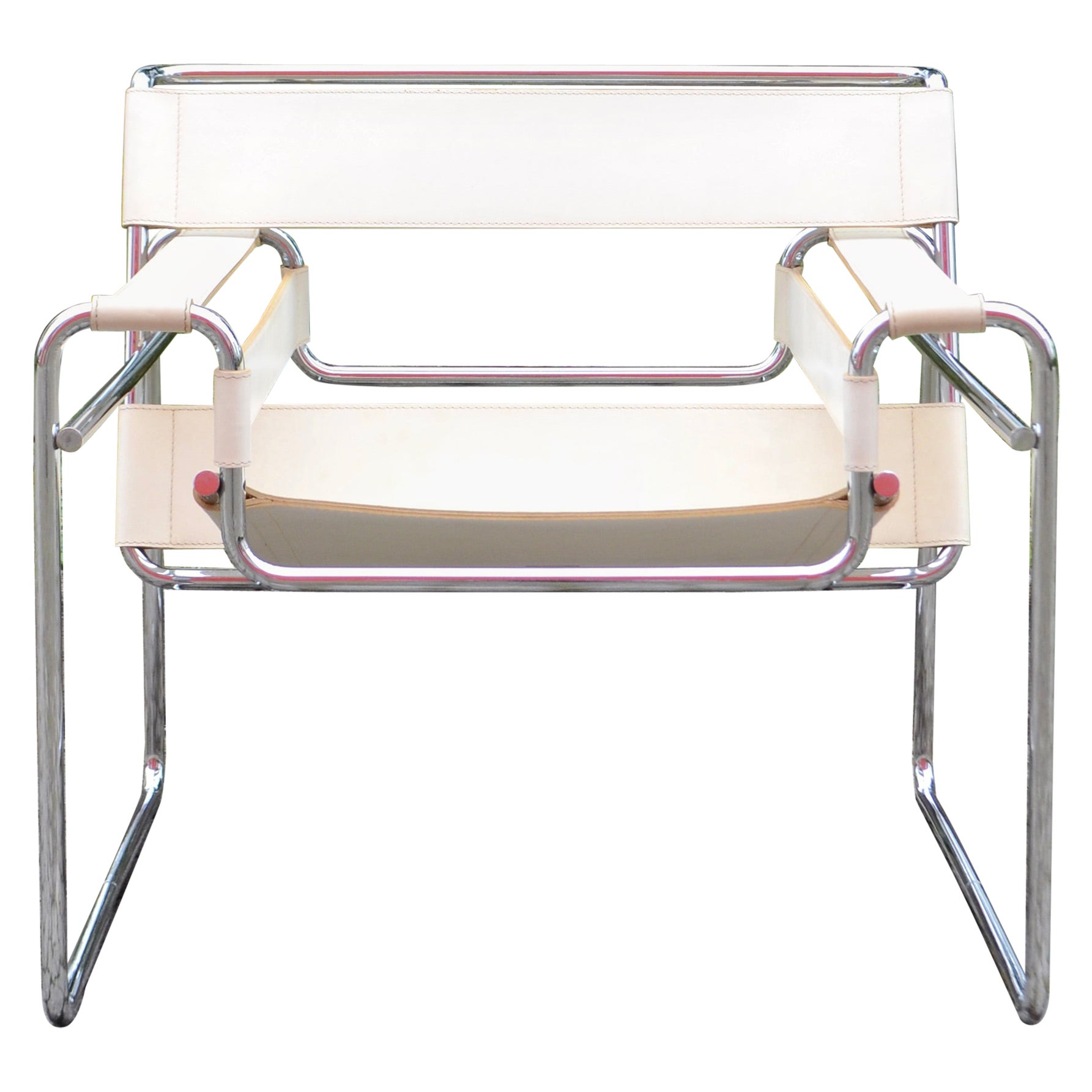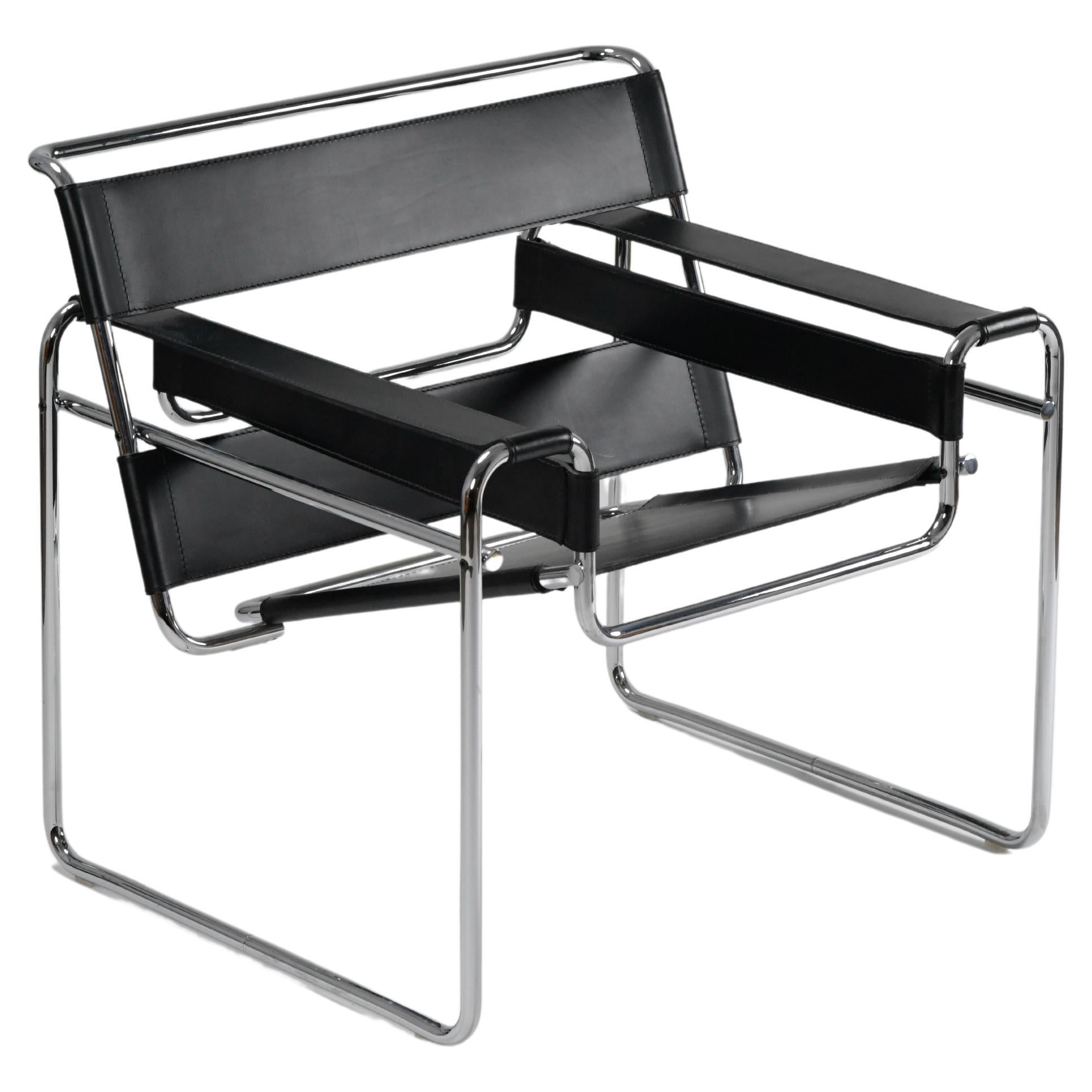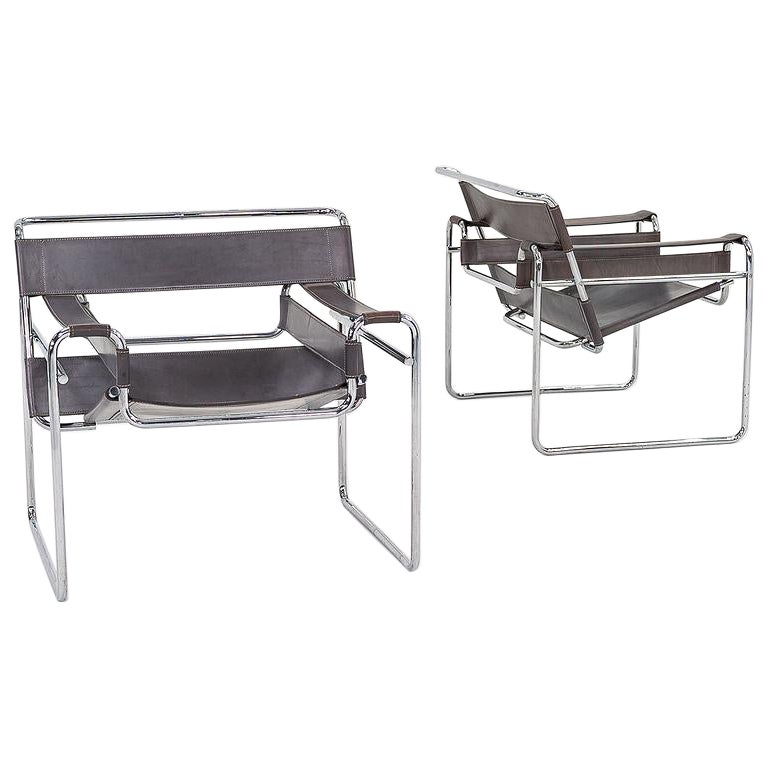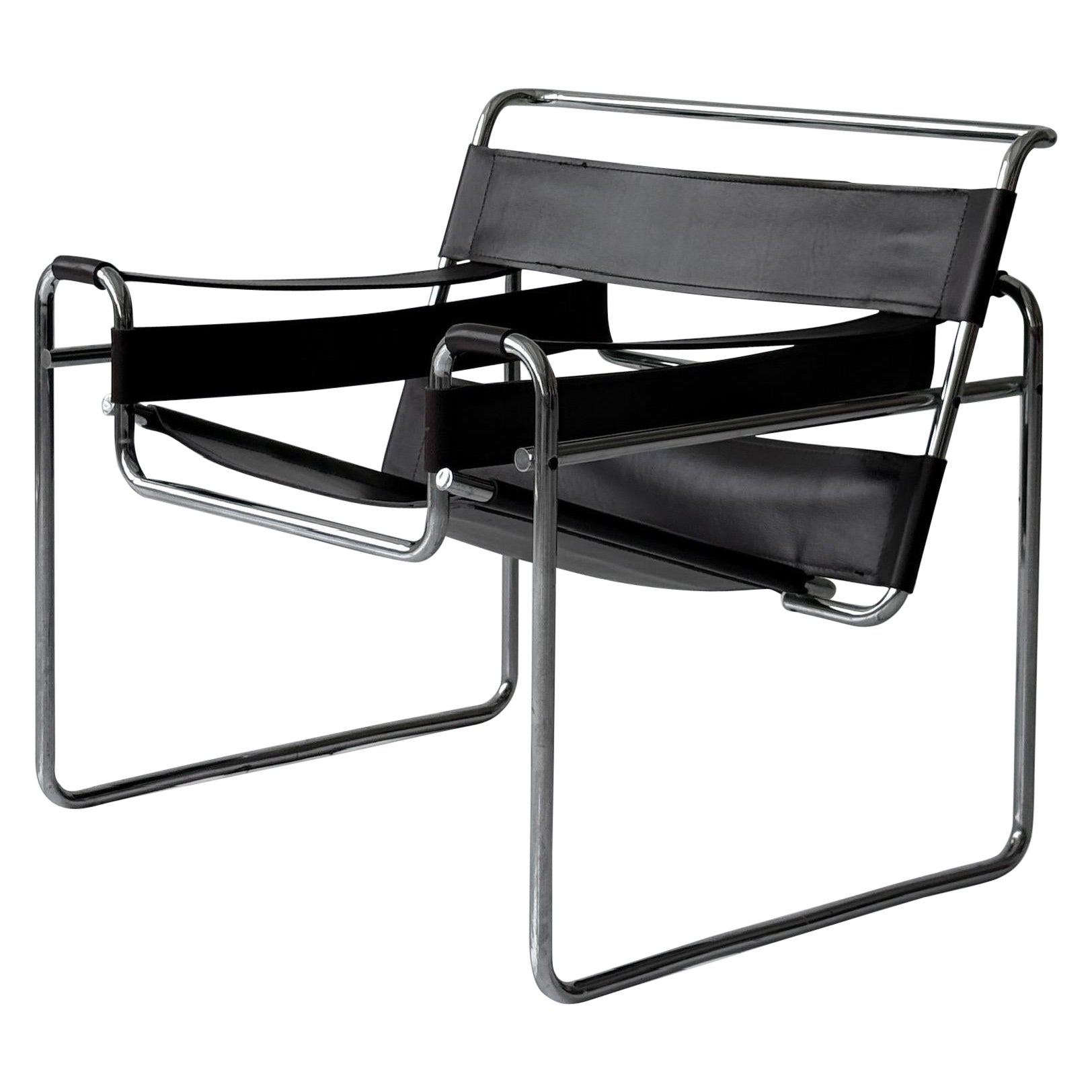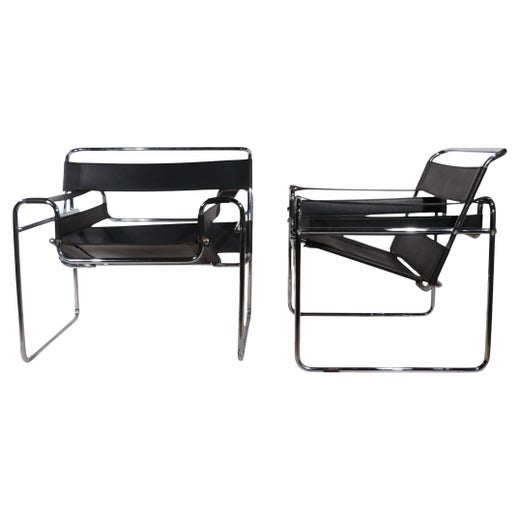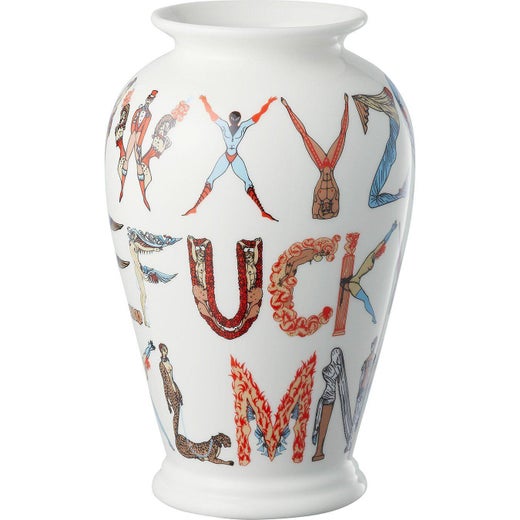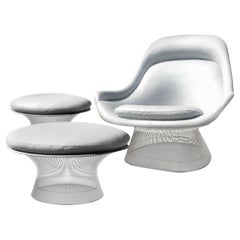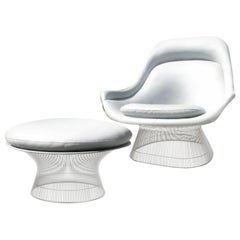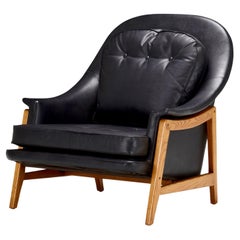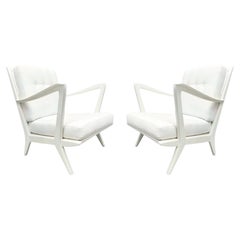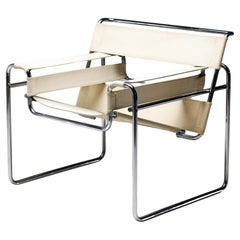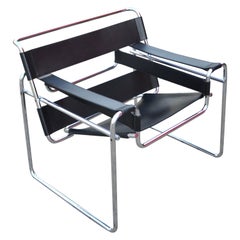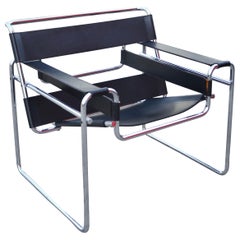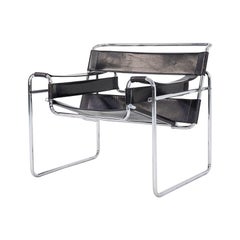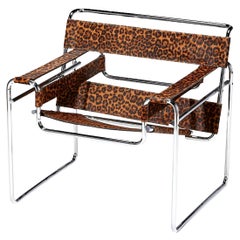
Knoll x Supreme Leopard Model B3 Wassily Lounge Chair, Marcel Breuer, 1925, 2019
View Similar Items
Knoll x Supreme Leopard Model B3 Wassily Lounge Chair, Marcel Breuer, 1925, 2019
About the Item
- Creator:
- Dimensions:Height: 29 in (73.66 cm)Width: 31 in (78.74 cm)Depth: 27 in (68.58 cm)
- Style:Mid-Century Modern (Of the Period)
- Materials and Techniques:
- Place of Origin:
- Period:
- Date of Manufacture:2019
- Condition:Wear consistent with age and use.
- Seller Location:Brooklyn, NY
- Reference Number:1stDibs: LU4190327106232
Marcel Breuer
The architect and designer Marcel Breuer was one the 20th century’s most influential and innovative adherents of modernism. A member of the Bauhaus faculty, Breuer — like such colleagues as the architects Walter Gropius and Ludwig Mies van der Rohe, and the artists and art theoreticians László Moholy-Nagy and Josef Albers — left Europe in the 1930s to champion the new design philosophy and its practice in the United States.
Born in Hungary, Breuer became a Bauhaus student in 1920 and quickly impressed Gropius, the German school’s founder, with his aptitude for furniture design. His early work was influenced by the minimalist Dutch design movement De Stijl — in particular the work of architect Gerrit Rietveld.
In 1925, while he was head of the Bauhaus furniture workshop, Breuer realized his signature innovation: the use of lightweight tubular-steel frames for chairs, tables and sofas — a technique soon adopted by Mies and others. Breuer’s attention gradually shifted from design to architecture, and, at the urging of Gropius, he joined his mentor in 1937 on the faculty of Harvard and in an architectural practice.
In the 1940s, Breuer opened his own architectural office, and there his style evolved from geometric, glass-walled structures toward a kind of hybrid architecture — seen in numerous Breuer houses in New England — that pairs bases of local fieldstone with sleek, wood-framed modernist upper floors. In his later, larger commissions, Breuer worked chiefly with reinforced concrete and stone, as seen in his best-known design, the brutalist inverted ziggurat built in New York in 1966 as the home of the Whitney Museum of American Art.
Breuer’s most famous furniture pieces are those made of tubular steel, which include the Wassily chair — named after Wassily Kandinsky and recognizable for its leather-strap seating supports — and the caned Cesca chair.
Breuer also made several notable designs in molded plywood, including a chaise and nesting table for the British firm Isokon and a student furniture suite commissioned in 1938 for a dormitory at Bryn Mawr College. Whether in metal or wood, Breuer’s design objects are elegant and adaptable examples of classic modernist design — useful and appropriate in any environment.
Find vintage Marcel Breuer seating, storage cabinets and lighting on 1stDibs.
Supreme
Supreme’s ascent from neighborhood cult favorite to auction star is a master class in brand marketing, based on creating hard-to-build desire. Launched in New York City in 1994, the iconic streetwear brand with a subversive attitude has attracted a following that ranges from downtown skaters to fashion's elite.
After a short-lived stint as a salesman for downtown Manhattan store Parachute and running a Stüssy branch as well as his own retail outlet, Union, British ex-pat James Jebbia opened Supreme, “the cool, cool shop … no big brands or anything.” The founder and director sold skateboards and sneakers, beanies, tees and hoodies while movies like Mean Streets and loud hip-hop played in the background, attracting a young downtown crowd of skateboarders, artists and entrepreneurs who found the store’s counterculture ethos appealing.
With success came brand collaborations big and small — all tightly controlled by Jebbia, who is renowned for unfailing business instincts — ensuring waiting lists and lines at new product launches. A 2012 partnership with Comme des Garçons brought Supreme avant-garde fashion followers with deeper pockets.
“I don’t think enough people take risks, and when you do, people respond — in music, in art, in fashion,” Jebbia told Vogue. He seemed to be taking a risk working with big brands. But although some fans accused him of selling out with Supreme’s Fall/Winter 2017 collaboration with Louis Vuitton, most did not, including the winning bidder for the Malle trunk at Christie’s.
A curated “Artist Series” of Supreme skate decks was inaugurated in 2001 when the then-not-so-famous street artist KAWS, aka Brian Donnelly, designed his Chum boards, a pair of which, signed, went for $32,000, four times their estimate, at the “Handbags X Hype” sale. The series now includes creations by Cindy Sherman, Nan Goldin, Damien Hirst, the Chapman Brothers and George Condo.
Find Supreme shirts, hoodies, jackets and other clothing and accessories on 1stDibs.
More From This Seller
View AllMid-20th Century American Mid-Century Modern Lounge Chairs
Stainless Steel, Nickel
Mid-20th Century American Mid-Century Modern Lounge Chairs
Stainless Steel, Nickel
Mid-20th Century American Mid-Century Modern Lounge Chairs
Leather, Ash
Mid-20th Century Italian Mid-Century Modern Armchairs
Textile, Walnut
Vintage 1960s French Mid-Century Modern Lounge Chairs
PVC
Late 20th Century American Mid-Century Modern Armchairs
Gold Leaf
You May Also Like
Mid-20th Century German Mid-Century Modern Armchairs
Chrome
Mid-20th Century Italian Bauhaus Lounge Chairs
Stainless Steel, Chrome
Mid-20th Century Italian Bauhaus Lounge Chairs
Stainless Steel, Chrome
Vintage 1960s Italian Modern Lounge Chairs
Steel, Chrome
Mid-20th Century Italian Bauhaus Lounge Chairs
Metal, Chrome
Mid-20th Century Italian Bauhaus Lounge Chairs
Steel, Chrome
